Heliene has completed a solar-plus-greenhouse for storage of produce in Washington State. The purpose of the 212 solar panels is to offset the local electricity use around the farm; this specific greenhouse is primarily used for product processing and storage.
The facility, DeGoede Farms, grows organic greens and herbs. The 51.9 kW of panels used were the Heliene 48 cell 250 W standard monoPERC solar cells which occupy about 75% of the available space. The units are a standard 60 cell format – but with cells dispersed in a less dense pattern in order to increase the amount of light that gets through.
The installation is located above an area of the greenhouse that would otherwise have been a heavily shaded work area. Westbrook Greenhouses integrated the hardware into the structure in their factory, and their team also did the greenhouse and solar panel installation onsite. An electrical contractor arrived later to finish up the wiring.
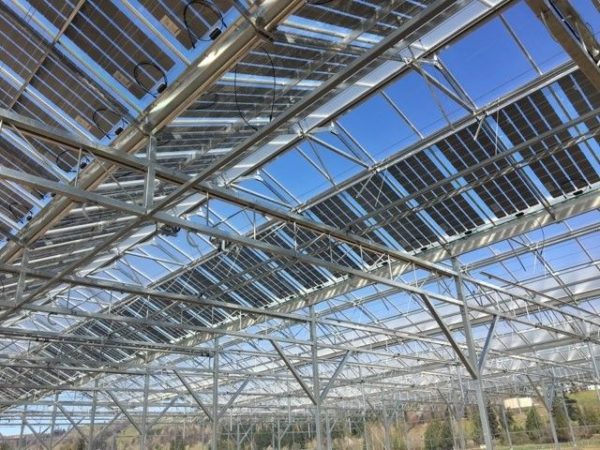
Heliene
As a solar panel manufacturer, Heliene is growing. The company recently announced that they would purchase a shuttered solar manufacturing facility in Riviera Beach, Florida and retool their existing Minnesota facility, bringing the company’s manufacturing yearly capacity per year to 900 MW.
The company is going deeper into the solar-plus-food story, though. Heliene began experimenting with greenhouse integrated solar panel (GiPV) designs with their first pilot project in 2018.
Today, Heliene is developing a new pilot project to launch their second generation greenhouse integrated photovoltaic (GiPV) module: a quantum dot tuned solar panel that shifts the photon wavelength from crop damaging UV into the orange and red wavelengths that plants crave. Heliene’s working hypothesis is that their panels actually increase the total photosynthetically active radiation (PAR), while still generating as much electricity as possible. The pilot is expected to start up in the spring of next year.
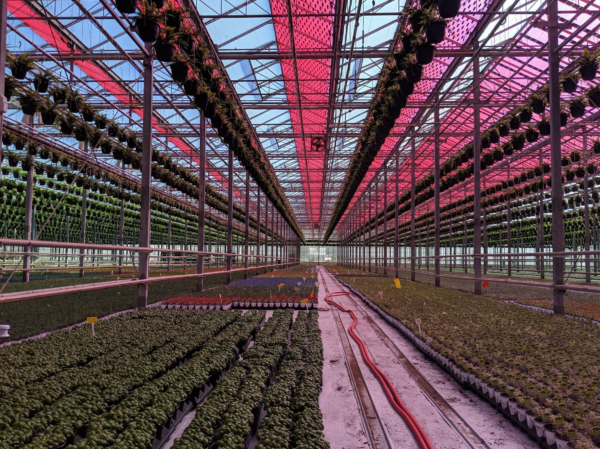
The solar panels above were tested in the initial pilot project in Ontario, Canada, in 2018. The facility grows herbs and other small greens. The modules use approximately 25% of the silicon cells of a standard panel, and the colored glass shifts the light spectrum entering the greenhouse.
The integration of solar power into greenhouses in Ontario is about more than saving monthly operating expenses. Due to Ontario’s Greenhouse Gas Pollution Pricing Act of 2018, solar power has nearly become a de facto requirement for the construction of greenhouses in the province. By 2030, it is expected that Canada’s carbon tax will be CA$170 per ton.
Additionally, in Southern Ontario, grid constraints and interconnection costs limit the types of facilities that are viable to connect to the grid. With these constraints, solar has become one of the viable paths for new greenhouse construction.
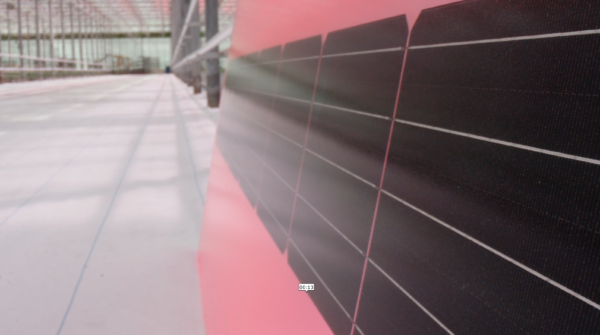
Image: Heliene
As of yet, Heliene says pricing for these greenhouse style projects doesn’t meet the generally accepted investment requirements of a pure solar panel installation – but with the Investment Tax Credit in the United States and three digit carbon taxes in Ontario – today’s returns on investment are reasonable.
But Ontario’s grid constraints and carbon taxes aren’t the only reason to integrate solar panels into greenhouses. In many agriculturally zoned areas, traditional solar installations are not allowed due to local zoning regulations.
However, when considering the volume of pushback from the community in some local zoning meetings – even in areas where solar is allowed – solutions which closely integrate food and solar become an important, viable work around.
A massive solar sales opportunity
Even though there is ample already-developed space to install solar, many landowners and farmers want the consistent, predictable solar generation revenue to complement their more volatile crop production. Which means, pushback from locals in zoning meetings won’t stop solar panels from being installed on farms.
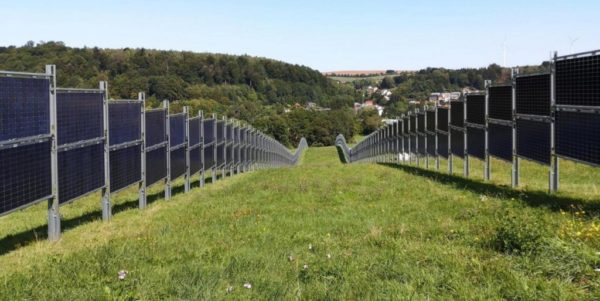
The industry is witnessing the early stages of agriculture integrated photovoltaic development, or ‘agrivoltaics’ as it’s now called, with multiple variations emerging.
Some of the ‘simplest’ agrivoltaic configurations are pollinator friendly, meant for the birds, the butterflies, and the bees. The next level up might be those projects, which integrate prairie grasses, and those that take into account long term land management. Our most ambitious agrivoltaic projects deliver solar plus food in fields, or experiment with products like Heliene’s second generation quantum dot solar panel.
The truth is, the volume of agrivoltaic projects right now is trivial relative to the hundreds of gigawatts of solar power that is currently installed each year. And though we’re still producing only a few percent of our electricity from solar power on a global scale, as we move forward, solar capacity will grow to be 10-20 times the currently deployed volume – with agrivoltaics poised to grow even faster.
Talking with the owner of DeGoede Farms, Ben DeGoede, I came away with the impression that if we were to solicit him with a solar powered greenhouse, warmed with heat pumps and solar warmed water – and was financially viable – he’d give the proposal serious consideration.
Ben’s attitude was one that solar sales people all appreciate: “Show me the spreadsheet.” In fact, after our phone call, Ben asked me to send him specs on the aforementioned unicorn – a grid independent, fully solar greenhouse that can handle the cold.
His thoughts align with other landowners this author has solicited for land leases – ‘if you can help me make more revenue from my current land, while also allowing me to keep farming it, then we will sign.’
A great opportunity, indeed. Here’s an agrivoltaic Twitter thread collected by the author.
This content is protected by copyright and may not be reused. If you want to cooperate with us and would like to reuse some of our content, please contact: editors@pv-magazine.com.
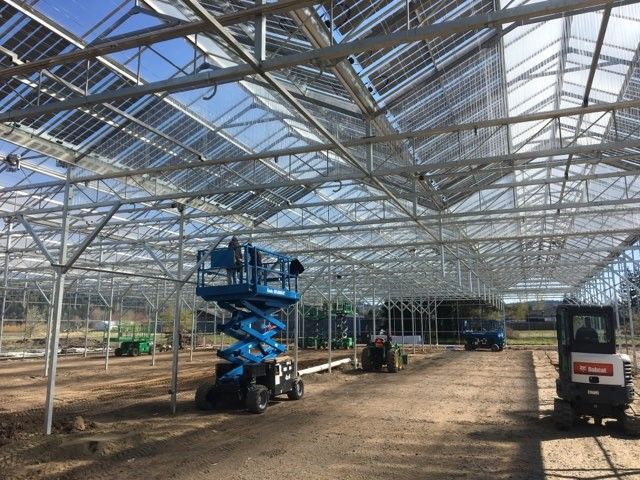







https://pv-magazine-usa.com/2021/12/24/all-i-want-for-christmas-is-a-solar-powered-greenhouse/
Even though there is ample already-developed space to install solar, many landowners and farmers want the consistent, predictable solar generation revenue to complement their more volatile crop production. See this, https://www.et-sun.com/Solar-Fences/